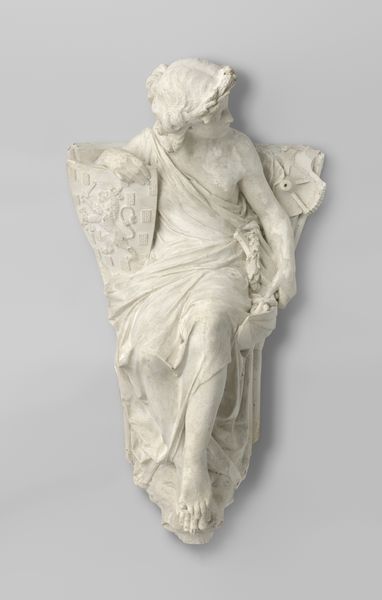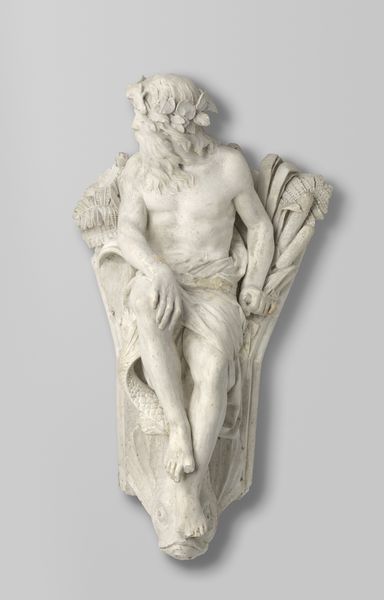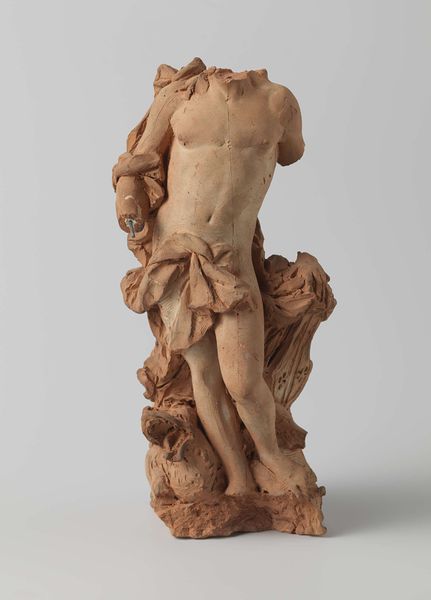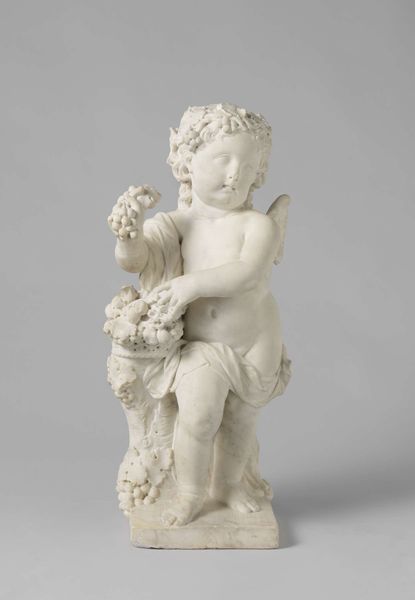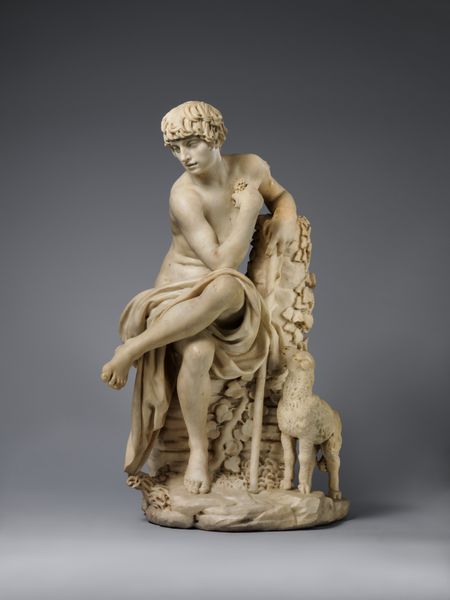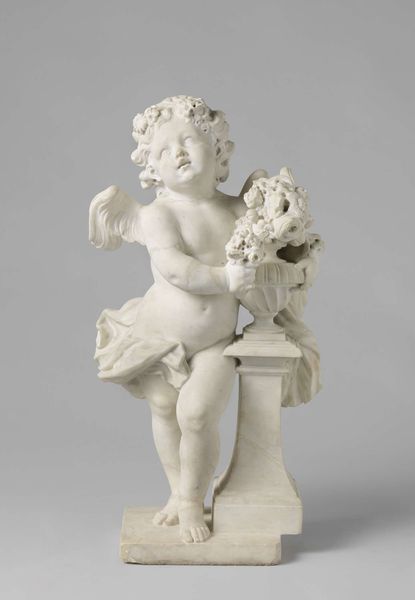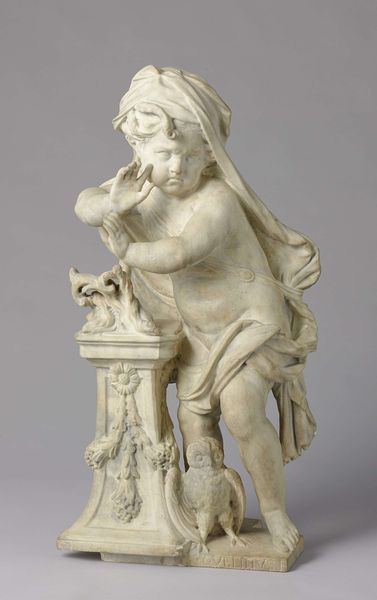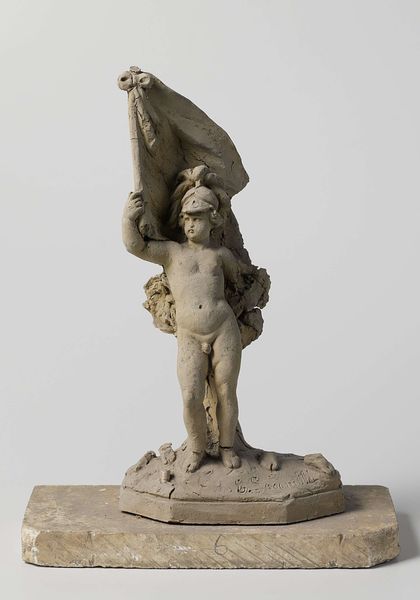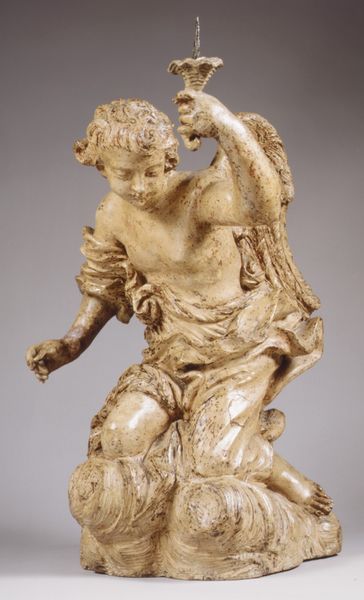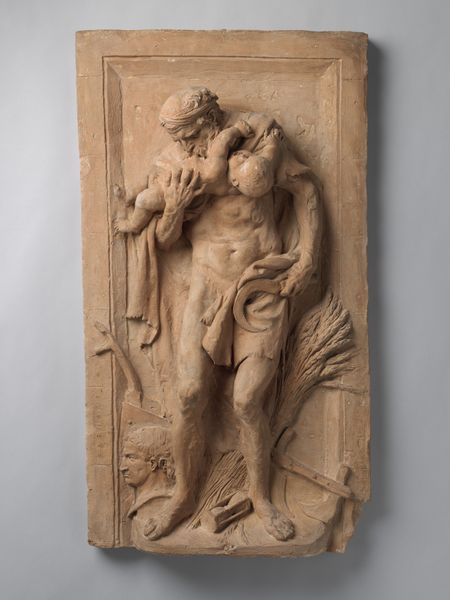
sculpture, wood
#
portrait
#
3d sculpting
#
sculpture
#
figuration
#
sculpture
#
wood
#
realism
Dimensions: height 60 cm, width 35 cm, depth 25 cm, weight 11 kg
Copyright: Rijks Museum: Open Domain
Curator: The first impression this sculpture makes is one of stark stillness, an almost melancholic tableau. Editor: Indeed. We're looking at "Fragment van de Oranjeboom," or "Fragment of the Orange Tree," crafted by Frans Stracké around 1874. It is currently held at the Rijksmuseum. The figure is sculpted in wood. The piece demonstrates a realism uncommon for wooden sculpture; it could almost be marble at first glance. Curator: The realism is remarkable. I’m immediately drawn to the textural contrasts, particularly the rough, almost primal base juxtaposed with the smoothness of the figure’s skin. Note how the light plays on the draping fabric and the soft curvature of his torso. There is a tactile quality at work in the surface, offering very little ornamentation besides what naturally occurs between material and hand. Editor: From a material perspective, the choice of wood is fascinating. Wood introduces its own set of constraints and possibilities to the sculpting process. I would like to understand why the artist chose this material considering it could be damaged or even rot. Curator: We might also examine the composition formally: the subtle asymmetry, the diagonals formed by the figure's limbs, and the negative space between his arm and body all contribute to a dynamic visual experience, a subtle invitation to move around the work. Editor: But what of the figure's role within the larger "Orange Tree" concept? It hints at something larger—perhaps colonial narratives embedded within Dutch history. A single man amidst plentiful fruit and foliage suggests broader systems of labor and resource extraction. What do the processes of making the artwork reflect of broader cultural materials? Curator: An excellent point. Formally, that basket he holds laden with fruit serves as an essential focal point. The angle of his conical hat provides direction to the piece as a whole, drawing our attention from top to bottom and offering visual support as if containing his gaze. The angle from bottom-up draws attention to the fruits he carries, emphasizing his offerings in exchange for shelter within nature’s hold, whether by permission or force. Editor: The materiality of art then gives us clues to the labor and production. So considering that relationship, our discussion really calls us to be actively aware of social inequalities around material excess. Curator: A profound reminder to perceive art through multifaceted lenses, considering how its beauty and structure speak both to aesthetics and our collective narratives. Editor: Absolutely. And it pushes us to acknowledge how materials shape stories and social responsibilities, as well as individual works of art.
Comments
No comments
Be the first to comment and join the conversation on the ultimate creative platform.
